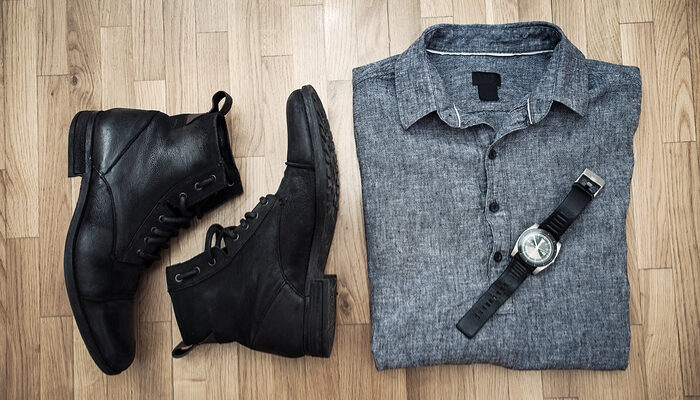“We’re hearing from women that they want the freedom of more options in their wardrobe, without spending tons of money and constantly buying new clothes,” said Tondon, who was quoted in a February2015, Business Wire story announcing the infusion of $8.8 million in capital funding into Le Tote. Northart added: “With massive amounts of clothing going to waste every year, we’re excited to use this funding to fundamentally change the way people shop and open up a new world of choices for women to supplement their existing wardrobe in a sustainable, affordable way.”
The company, which is on target to ship more than $100 million worth of clothing in 2016, employs a proprietary sizing algorithm, backed up by a recommendation tool that uses machine learning and an impressive amount of customer feedback. Financial backer Mike Kwatinetz, founding general partner with Azure Capital Partners, was effusive as he praised his company’s investment venture: “The technology and algorithms Le Tote uses are powering this discovery tool into a fashion powerhouse that will ultimately provide brands with previously unavailable data behind their customers and product. This will forever influence the way the industry markets and merchandises their brands.”
A Stitch (Fix) in Time
Users of Le Tote competitor Stitch Fix’s service also let stylists be their personal shoppers, curating everything from office-appropriate attire to chic mix-and-match weekend looks. Personal stylists handpick five (that seems to be a magic number of sorts) clothing and accessory pieces based on a customer’s budget, taste, and lifestyle. When a client receives her “fix” in the mail, she has three days to try on each of the items and decide what she wants to keep and what she would like to send back. A $20 fee is applied toward the price of any item she decides to purchase.
The $300 million business, also based in San Francisco, was the brainchild of Katrina Lake, who proposed a rudimentary version of the company as part of her application to Harvard’s MBA program. In 2010, as a Harvard graduate student, she started testing her entrepreneurial concept on friends, who filled out style-preference surveys that Lake then used to outfit the women. This one-person shoestring operation would go on to become one of the first services to combine high-tech analytics and personal stylists to deliver smart fashions via subscription.
What these and other online apparel-subscription services have in common as they make their style selections is a secret weapon: artificial intelligence, aka recommendation algorithms. “I think it’s the single most salient aspect of our business,” said Eric Colson, chief algorithms officer at Stitch Fix. “Our business is getting relevant things into the hands of our customers. This is the one thing we’re going to be best in the world at. We couldn’t do this with machines alone. We couldn’t do this with humans alone. We’re just trying to get them to combine their powers.”
As the company’s grown, there’s been more than a little combining going on at Stitch Fix. What started as a single basic algorithm, in 2012, has ushered in a multitude of formulas today. When Colson, who was vice president of data science and engineering at Netflix before joining Stitch Fix, came to the company, it was employing an algorithm for basic criteria filtering. If a client wore size large, for example, the algorithm would filter out medium and small items. If she didn’t wear cardigans or anything vaguely resembling fuchsia, those categories would be excluded.
Under Colson’s direction, the algorithms multiplied, with hundreds of them being employed today. “We’ve been able to augment human judgment with machine algorithms,” he told Computerworld. “We have to combine machines and expert humans. It turns out it works better than even I could have thought.” Among other things, Stitch Fix now uses data to match clients with stylists, calculate how satisfied customers are with their selections, and manage inventory. There’s even an algorithm that assesses a client’s Pinterest images to further zero in on what she loves.
The Human Touch
Lest you think all the decisions are data-focused, we need to mention the work of humans in all of this. Once a relationship is established with a client, and considerable information—including style preferences, measurements, geographic location, work and leisure details, and feedback about previous selections—is collected in a customer’s profile, personal stylists take over. They’re the ones who make the creative decisions on behalf of their clients. According to Layla Katz, a lead stylist with Stitch Fix, “When a client fills out a profile and is ready to be styled, we are able to see what the algorithm is suggesting based on the data collected from her profile. It helps to not have to worry about the broad strokes of what a client does not want. Then we can make creative decisions about what will fit her body and her lifestyle.”
Colson, the algorithm guru, elaborated: “Humans are better at interpreting the tone and meaning of textual feedback, but they can’t do many [calculations]. Machines can hold in their memories far more than we can. The challenging part would be not using algorithms. It would be scary out there. It would be a leap of faith to put your finger in the air and make the best guess about what people will buy. That would give me anxiety. We have the benefit of data.”
Not a Unanimous Decision
Le Tote and Stitch Fix aren’t alone in this rapidly growing world of online fashion tech. Other notables offering up women’s clothing include Rent the Runway, Trunk Club, Golden Tote, Elizabeth & Clarke, Fabletics, Rx Vintage, and Tog & Porter. And men can choose from Five Four Club, SprezzaBox, Curator and Mule, and Bombfell, among others. With so many options and with algorithms aplenty, is on-demand clothes shopping a surefire hit?
Not necessarily. One of the biggest hurdles that all the online fashion-subscription services face is convincing people, especially women, to leave their all-important style decisions up to others. “Women have different tastes in style and come in a variety of sizes and shapes—both of which add great complexity to choosing the right outfit for subscribers,” Kia Kokalitcheva wrote in Fortune, adding, “Meanwhile, many shoppers are still apprehensive about even ordering clothes online without trying them on for fit.”
Plenty of bloggers have given the closet-in-a-box services a whirl and weighed in with their critiques. (And Hypergraphia has examined the pros and cons of other subscription services: meal-delivery kits and subscription boxes.)
St. Louis attorney Sara McCarty tried Le Tote and found fault with the condition of some of the items. Besides obvious wear and tear, she noted a broken clasp on a bracelet, a prominent snag on a sweater, and a torn hem on a pair of pants. “The pieces were still wearable, but not in pristine condition,” she wrote in her blog, Running from the Law. She also mentioned that she would prefer the option to choose just clothing items, instead of having each shipment include three pieces of apparel and two accessories.
Hawaii mother of four Erika was less than impressed with her first (and only) Stitch Fix experience. She felt that what was shipped to her didn’t match her explicitly stated style preferences. An entry in her blog, A Little Insanity, spoke to the detailed directive she provided: “I am a homeschooling mom with kids, who lives in Maui. Getting dressed up here is like wearing a scarlet letter and [is] out of place. I literally live in yoga pants or running shorts with a tank top and flip flops. I am skinny (36/27/36), wear no jewelry, cook five-plus hours in the kitchen, and garden outside. My style is yoga chick meets surfer chick (think Athleta).” Needless to say, the dressy tank tops and fancy skirt she received weren’t what she was hoping for. “My stylist said I could wear these tops, even with yoga pants. Um, I don’t think so.”
To be fair, bloggers and reviewers who love online style services abound. Jessica Cook gave a thumbs-up to her subscription experience with plus-size brand Gwynnie Bee. “It’s like I have a television wardrobe. I’ve never worn the same dress to the office twice!” she wrote in her blog, Herding Cats. “The fact that I’m just borrowing and not owning gives me the freedom to play around with different styles and colors. Like, if you had asked me before all this I would have said that I enjoy simple clothes in earth tones, but it turns out that I also love bright patterns and shift dresses. Peplum tops? I’ve always been skeptical, but why not? Sweater with a bedazzled monkey on the front? Let’s give it a shot. I’ll try anything once!”


